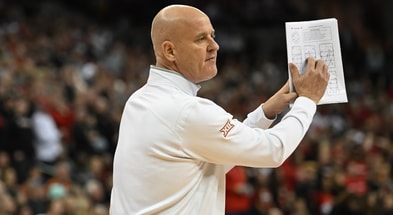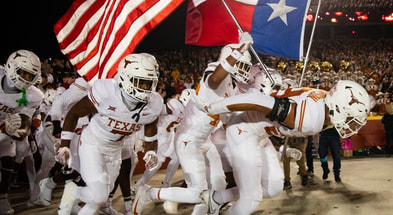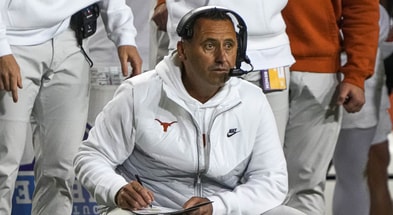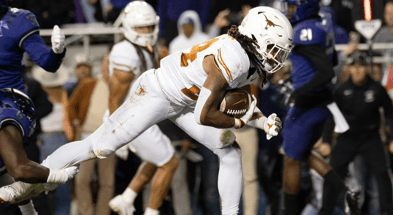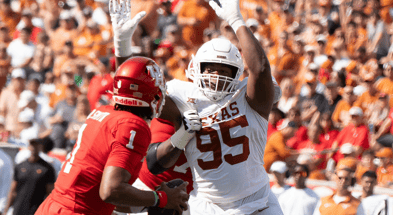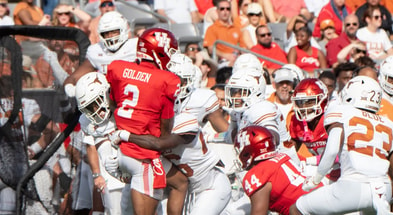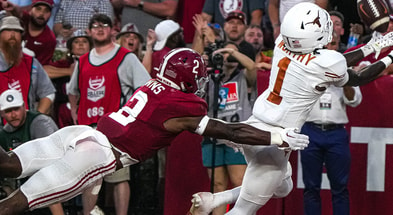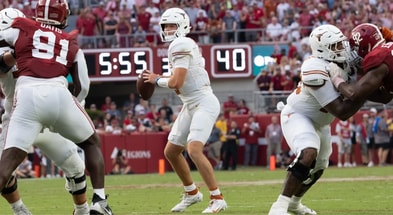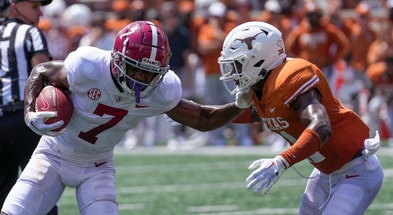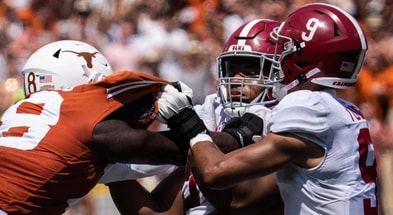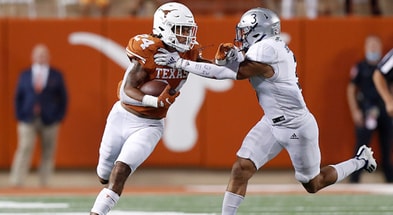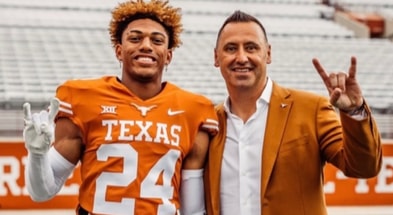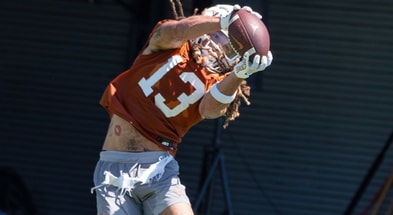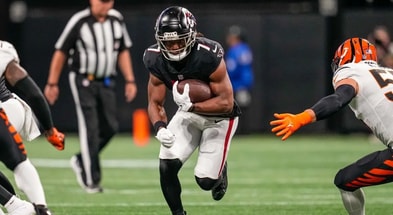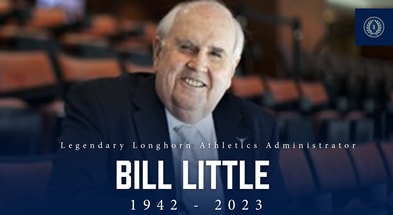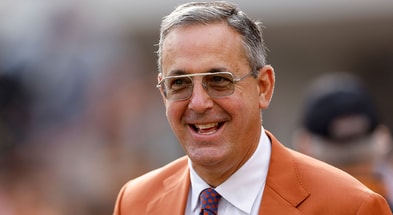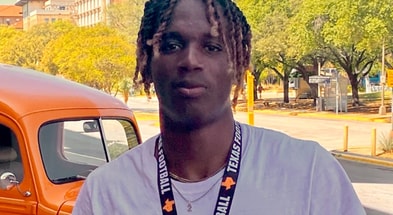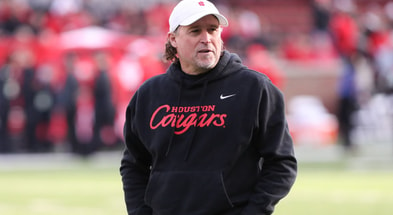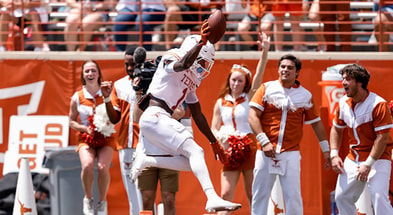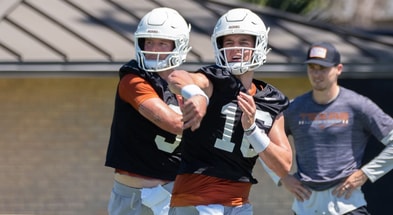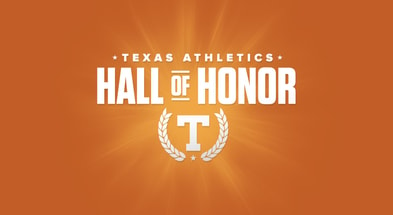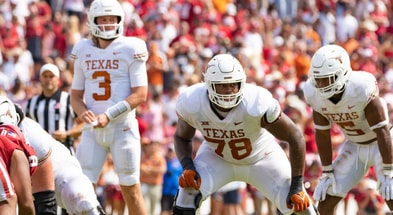New Texas coaches, new perceptions on Longhorn players
Whenever new coaches take over a program, players have an opportunity to shake off previous conceptions, reinvent themselves, and gain or lose playing time based on the requirements of a new system.
Early Texas fall camp depth charts are often surprising to observers, but “early” is the key word in that sentence. New coaches like to try players out at different spots to evaluate their fit and establish the “true” depth chart rather than the one that will be printed in the media guide. In other words, a walk-on offensive tackle is not actually the first option off of the bench behind Derek Kerstetter.
Current player perception is based on limited data points: spring ball, offseason work, and the new Texas coaches’ sense of player buy-in. The new staff also brings in their own preconceptions of what they want, what works, and their preferred types at each position. There’s a natural tendency to reward high buy-in guys with enough experience to know how to line up over superior talents who need to be coached up. How should a coach balance starting the unremarkable guy who won’t line up wrong with the higher ceiling athlete who doesn’t really get it yet? Each can get you beat, in different ways.
One of the great tensions inherent to coaching is trying to field the team you want vs. fielding the best team you have. It’s a two way conversation between the coach’s preferred system and actual player skill sets. Great coaches find a way to feature what the player is good at while still implementing aspects of what they want to do conceptually. Coaches with hidebound systems that require talent advantages and deep experience for success should rethink those systems. Of course, in doing that, they risk having to blame the man in the mirror rather than the players when they come up short.
Sometimes that two way conversation between coach and talent is a tone deaf monologue. Texas defensive coordinator Todd Orlando tried to turn Malcolm Roach (2018) and then Joseph Ossai (2019) into off-the-ball linebackers (he also flirted with Breckyn Hager there as well). Roach now plays for the New Orleans Saints as a 300 pound interior DL and his brief miscast at Mike linebacker contributed to the second season opening debacle against Maryland. He was redeployed, but Texas had lost an entire year of prep to find their true middle linebacker and it would take Roach another year to re-establish his play at the 4i position. Joseph Ossai played well enough off the ball because he’s Joseph Ossai, but eventually found work at his true position on the edge after Orlando’s firing (beginning in the Utah bowl game) and was eventually drafted in the 3rd round. I’m not just trying to point out that Todd Orlando would have started Luke Kuechly at fullback, but that coaches can make bizarre choices when they’re hunting a specific fit for their scheme at the expense of positional common sense.
Right now, the Texas coaches are clearly trying to find their best combinations at several positions.
Kyle Flood must choose between his preferred massive OL template that served him so well at Bama and the sweet feet of Andrej Karic and Jake Majors. The insertion of those players into the lineup last year opened up the outside zone running game (which opened up everything else) and weaponized Bijan Robinson’s unique one-cut skill set. What is lost or gained by going massive vs. going quick? The choices here aren’t just about offensive line play. They will determine the base offensive identity of this football team.
In the defensive backfield, the Texas coaches must balance experience vs upside. There’s also a larger conceptual question to be answered: is the best nickel option actually a third cornerback? If so, that has trickle effects to who might start at safety (suddenly Jerrin Thompson and Chris Adimora are back in the mix). Predicting how safety plays out is in the name itself. Safety. Coaches all want Earl Thomas and Jerry Gray back there, but in the absence of studs who are both physical marvels and football geniuses, they’ll favor the player who doesn’t blow coverages. A coach can somewhat scheme around an athletic deficit. A coach cannot scheme around an uncovered receiver catching a 70 yard touchdown. This observation leads to much fan consternation, but it’s reality.
At linebacker, does Pete K run the risk of having his preferred personnel types fitting with his envisioned roles at the expense of keeping better talents on the bench? The Longhorn DC has shown enormous flexibility historically, but does he have enough defensive IQ and experience to run his preferred week-to-week adjustments? Or will he have to opt for his best generic lineup and then build out over time? At the player level, Ben Davis looks great on the hoof and is exactly the kind of player that is incredibly beguiling to coaches (see Hughes, Naashon) but there’s a reason he didn’t see much playing time at Alabama. Or has he simply not caught the right break? Similarly, Ovie Oghuoufo was well regarded by many Irish fans for his raw ability, but he was a tweener that didn’t fit their defense. Pete Kwiatkowski is a guy whose ears perk up when he hears that label.
Steve Sarkisian must carefully evaluate his best base personnel group. Is it 12? 11? There’s a fine line between protecting a new starting quarterback and diminishing him by limiting his options. Conceptually, will Texas look more like 2014 USC or 2020 Alabama? Or will this be a hybridized offense built out around Bijan and the play action passing game?
At wide receiver, my bet is that Sarkisian is going to start the guys who make the right reads and catch the ball. At least early on. “Pure talent” will be a secondary consideration until the talent knows what they’re doing out there. I think Sark believes that starting the best pure talent right off the bat that doesn’t know how to solve Cajun press man or deal with Arkansas DC Barry Odom’s junk defenses is the most likely path to an 0-2 start. But at the same time, Sark likely understands that getting that talent playing time and bringing them along in practice rapidly is the best bet for Texas to beat Oklahoma and Iowa State.
Never underestimate wild card potential. WR John Harris was so deep in the doghouse in his senior spring that Texas coaches had him at 4th string and made him finish out the Spring game with the walk ons as punishment. However, Harris found offseason religion and quickly worked his way up the depth chart, eventually notching 1,051 yards receiving in his final year. The only bright spot in a moribund Texas offense. Coaches must be open to allowing a player to redefine himself.
The pads aren’t even popping in earnest yet. Texas coaches must keep open minds and avoid the compulsion for certainty.
If the Texas depth chart doesn’t fully materialize until late August, so be it. It will be different by October anyway.
Cover photo from Shane Ware for Inside Texas
